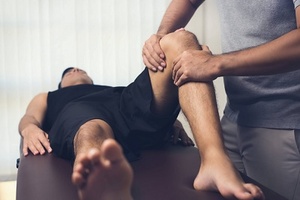Effective Knee Pain Treatment: A Step-by-Step Guide
الجسم
Knee pain affects men and women of all ages and can interfere with your ability to enjoy life to the fullest.
An injury, a medical condition, or bad posture can all cause knee pain. Rest, ice, compression, and elevation may manage minor knee pain. But if this treatment isn't helping after a week, you should see a Knee Pain doctor at Long Island, who is highly skilled in the diagnosis and treatment of all sorts of knee conditions.
Symptoms of Knee Pain
Depending on where the pain is coming from, knee pain symptoms can include:
- Difficulty bending or walking
- Inability to fully straighten the knee
- Locking of the joint
- Popping or crunching noises during movement
- Redness and warmth to the touch
- Knee stiffness and swelling
- Weakness and instability of the knee
We must diagnose your condition in order to provide you with appropriate knee pain physical therapy and to determine which of our other types of knee pain treatment will be most beneficial to you.
Causes of Knee Pain
The knee joint is a complex part of the body prone to a number of painful, disabling conditions. Most commonly, these include arthritis, patellofemoral syndrome (runner's knee), and meniscus tears, all of which we'll examine in depth below. Other causes of knee pain include fractures of the patella (knee cap), infections, ruptures or sprains of the anterior cruciate ligament (ACL), and bursitis.
Knee pain is often caused by accidental injuries, such as a slip and fall or sports activity. In Long Island, our approach to treating knee pain is holistic, relying on methods that help your body heal without surgical intervention or downtime. The goal of a pain management specialist is to relieve your pain and improve your function as quickly as possible with tried and true methods of knee pain treatment.
Risk Factors for Knee Pain
You are at greater risk of developing knee pain if you:
- Are obese
- Lack of muscle strength or flexibility
- Engage in sports that put pressure on your knees (e.g. skiing, basketball, jogging)
- Work in a profession where knee strain is repeated, such as plumbing or construction
- Have had a previous knee injury
Although some knee pain is relatively benign and resolves with rest, ice packs, and over-the-counter pain medications, knee pain caused by a serious injury or pathology should be treated by well-trained professionals. It is important to get a complete evaluation of severe knee pain that does not respond to home remedies because ignoring this type of pain can lead to permanent joint damage.
What treatments can provide for pain relief?
The nature of your injury will guide treatment. Your preferences will, too. It's best to consider the full list of options available. These include:
Rest, ice, compression, and elevation: This may work for acute pain, but treatment for chronic pain differs. For chronic pain, rest can weaken muscles that need strengthening to reduce or eliminate pain.
Physical therapy and exercise: Certain workouts relieve discomfort and help stretch or grow muscle. Additionally, you must be aware of workouts that should be avoided, as they may aggravate your knee further.
Lifestyle changes: There are some changes you can make to reduce your pain. For example, maintaining a healthy weight reduces the stress on your knees. You may also need to avoid running, which puts too much pressure on the knees.
Peripheral nerve stimulation: A surgeon implants electrodes and a small battery pack near the peripheral nerves that send pain signals from the knee. The electrodes deliver a weak electrical current to the nerve (producing a tingling sensation) that triggers the brain to turn off pain signals. The patient controls the frequency of the electrical stimulation.
Complementary therapies: Some people find relief through massage, biofeedback, relaxation, meditation, acupuncture, yoga, or visualization.
Medication: This includes over-the-counter treatments, such as acetaminophen and nonsteroidal anti-inflammatory drugs, and more powerful medications, such as opioids. Other medications, including steroids, may also help. Because opioids can be addictive, your medication plan must be overseen by a qualified pain management specialist. Some precautions are also required with anti-inflammatory medications and steroids, which can weaken cartilage and knee joints.
Surgery: It is used primarily to repair structural damage. It should not be the first choice, but sometimes, it is the only solution. This timely knee surgery page provides details on options and pain management considerations.
Regenerative therapies: Researchers are constantly working on options such as plasma injections and stem cell treatments. The study is still preliminary and has not yet reached a conclusion.
conclusion
Knee pain can have a negative impact on your activity level and your enjoyment of life. Why suffer needlessly? Make an appointment with knee pain treatment specialists Long Island.










تعليقات